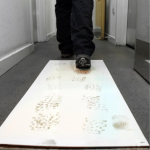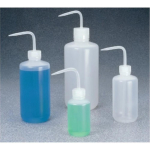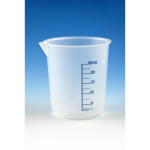Analysis Note
Mixture of large, extracellular chondroitin sulfate proteoglycans (CSPGs) purified from embryonic chicken brains by chromatrographic methods. By PAGE analysis material is 95% pure, and migrates as a large HMW (﹤400kDa) mass under reduced conditions. The precise amounts of each CSPG contained in the mixture is not quantified, however the virtually all of the CSPGs present in the source brains are collected.
HOMOGENEITY:
By PAGE analysis material is 95% pure, and migrates as a large HMW (﹤400kDa) mass under reduced conditions. The precise amounts of CSPG species has not been determined.
Application
CC117 has been used successfully with rat and mouse brain slice culture systems.
Disclaimer
Unless otherwise stated in our catalog or other company documentation accompanying the product(s), our products are intended for research use only and are not to be used for any other purpose, which includes but is not limited to, unauthorized commercial uses, in vitro diagnostic uses, ex vivo or in vivo therapeutic uses or any type of consumption or application to humans or animals.
General description
DESCRIPTION/COMPOSITION:CC117 contains a mixture of large, extracellular chondroitin sulfateproteoglycans isolated from embryonic chicken brain. Amino acid sequence analyses and immunological studies have demonstrated that the major components of this mixture are neurocan, phosphacan, versican, and aggrecan. Following chondroitinase treatment to remove the glycosaminoglycan portion of these proteoglycans, the major components of this preparation resolved on SDS gels are 250 kDa core proteins representing neurocan and 400 kDa core proteins representing aggrecan, phosphacan, and versican.
*Quantity: Protein as determined using the bicinchoninic acid (BCA) assay. Note that 100 μg is a measurement of core polypeptides. Components of this mixture contain core polypeptide plus attached glycosaminoglycans
Product Source: Isolated from whole 12-14 day old embryonic chicken brains.
Aggrecan, versican, and neurocan are members of the family of hyaluronic acid-binding proteoglycans and therefore each contains hyaluronic acid binding regions, Ig-like domains, EGF like domains, lectin-like domains, and complement regulatory-like domains. Phosphacan is distinct; it contains a region of similarity to carbonic anhydrase, a fibronectin type III domain, and is a splice variant of the transmembrane protein receptor tyrosine phosphatase equivalent to its extracellular portion.
Although aggrecan was traditionally thought of as a cartilage proteoglycan and neurocan and phosphacan were thought of as neural proteoglycans, recent studies indicate that all four of these proteoglycans have broad yet distinctive distribution patterns inearly embryos. The presence of these proteoglycans has not been carefully examined in adult tissue beyond the expected sites. These proteoglycans are anti-adhesion molecules and are capable of inhibiting both cell-ECM and cell-cell adhesion.
Legal Information
CHEMICON is a registered trademark of Merck KGaA, Darmstadt, Germany
Physical form
Provided as a liquid in PBS, containing no preservatives.
Storage and Stability







